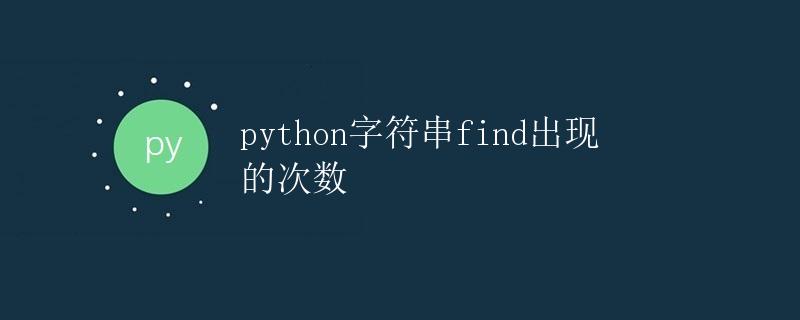python字符串find出现的次数

在 Python 中,我们可以使用 find() 方法来查找一个子字符串在另一个字符串中出现的位置。但有时候我们需要统计某个子字符串在一个字符串中出现的次数。本文将详细介绍如何使用 find() 方法来实现这个功能。
字符串的 find() 方法
Python 中的字符串有一个 find() 方法,可以用来查找一个子字符串在另一个字符串中的位置。find() 方法的用法如下:
str.find(sub[, start[, end]])
其中,str是要被查找的字符串,sub是要查找的子字符串。start和end是可选的参数,表示在str中查找的起始位置和结束位置。
find() 方法会返回第一个匹配到的子字符串的索引,如果没有找到则返回 -1。
统计子字符串出现的次数
要统计一个子字符串在一个字符串中出现的次数,我们可以使用一个循环来不断地调用 find() 方法,直到找不到为止。下面是一个实现这一功能的示例代码:
def count_substring_occurrences(main_str, sub_str):
count = 0
start_idx = 0
while True:
start_idx = main_str.find(sub_str, start_idx)
if start_idx == -1:
break
count += 1
start_idx += len(sub_str)
return count
# 测试代码
main_str = "hello worldhellohellohello world"
sub_str = "hello"
occurrences = count_substring_occurrences(main_str, sub_str)
print(f"The substring '{sub_str}' appears {occurrences} times in the main string.")
运行以上代码,输出为:
The substring 'hello' appears 4 times in the main string.
使用正则表达式进行统计
除了使用 find() 方法之外,我们也可以使用正则表达式来实现统计子字符串出现的次数。以下是使用正则表达式的示例代码:
import re
def count_substring_occurrences_regex(main_str, sub_str):
pattern = re.compile(re.escape(sub_str))
occurrences = len(re.findall(pattern, main_str))
return occurrences
# 测试代码
main_str = "hello worldhellohellohello world"
sub_str = "hello"
occurrences = count_substring_occurrences_regex(main_str, sub_str)
print(f"The substring '{sub_str}' appears {occurrences} times in the main string.")
运行以上代码,输出同样为:
The substring 'hello' appears 4 times in the main string.
以上就是统计子字符串在一个字符串中出现的次数的两种方法。根据实际情况选择合适的方法来实现功能。
 极客教程
极客教程